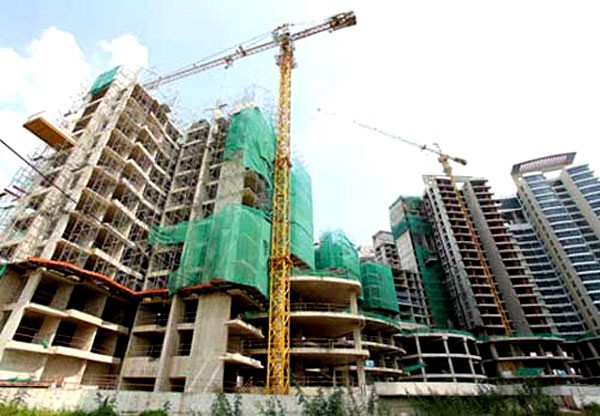Growth Through Low Income Housing
Post on: 11 Июнь, 2015 No Comment

For many people, the thought of low income housing likely conjures up images of rundown, crime-filled inner-city residences. For David Esselman, vice president of external relations for National Community Renaissance (National CORE), it is different.
It is a high value, high return industry in terms of emotion. You get to create great product for great people, he said. If you like partnerships, it’s the right industry to be in…it’s all about the relationships.
Those who qualify for low income housing are those who earn 50 percent or less of their area’s median income. Many developers will target incomes even much lower than that…in order to make certain that their development is approved by state agencies and reaches the…greatest need for families trying to find decent affordable housing, Bob Greer, president of Michaels Development Company, said.
Low income housing makes housing more accessible for many families
One way in which low income housing is different than most other types of real estate is that tenants are much easier to find than they are for typical properties. That is simply because of supply and demand; low income housing is, in many areas, in limited supply, which means that demand is high.
There is a common misconception that low income housing today is of the same quality as the low income housing projects of the past. If you went and looked at the product that has been created in the last 15 years, you would find that it is better, on average, than market rate apartments in this country, Esselman said.
This misconception is a hurdle that low income housing developers and advocates have to work hard to overcome. Often, community members try to prevent low income housing from coming to their area, assuming that the stereotype that low income housing equals low quality housing is true.
Every developer of affordable rental housing faces this term ‘NIMBY-ism,’ Greer said. NIMBY stands for not in my backyard. Low income housing developments face opposition from community residents who are afraid that such a development will damage their property values and interfere with the availability of community resources, he said.
Low income residents have their own fears about property values. In many cases, the neighborhoods where we work become revitalized and gentrified, and then the housing is no longer affordable, Nancy Stangle, development director of Georgia-based Athens Land Trust, said.
To address that fear, Athens Land Trust uses a limited-equity resale formula so that the house will remain permanently affordable, Stangle said. And the appreciation in the house is shared with the whole community.
When planning a low income housing development within a community, all kinds of fears come out, Greer said. They think it’s going to be harmful and not helpful. And so that is an obstacle. One way of overcoming that obstacle, he said, is to partner with a community non-profit.
Further, he added, local officials are more cooperative when people who are part of a community are involved in a project. The non-profit gives developers greater support and allows us to achieve acceptance in the community.
Mixed use projects, incorporating low income housing and retail, are gaining popularity
Another way in which developers are gaining acceptance is through production of mixed income developments, rather than strictly low income developments.
In addition to just mixed income projects, mixed use projects are gaining popularity as well. Mixed use projects, incorporating some retail, have been built in locations such as Los Angeles and Houston, Esselman said.
Low income housing is needed throughout the country, but especially in large metropolitan areas and real estate markets where there’s a lot of growth, like Seattle, Portland, Boulder, Silicon Valley, places in the Northeast, Stangle said. Affordable housing is a problem for every community because the cost of housing and the sale prices of houses are going up faster than incomes.
This means that, for investors and developers, where you see the greatest opportunity for return is in the Californias and the New Yorks and the Floridas, Esselman said.
Cities are striving to ensure that developments are being aimed at people earning as little as 25 percent of an area’s median income instead of the standard 50 percent, Esselman said. They are also seeking affordable housing that remains affordable for 55 or 99 years.
Low income housing developments that seek to be eligible for tax credits are required to be set aside as low income housing for a minimum of 30 years, according to the Danter Company. Developers can pledge to keep the housing set aside as low income housing for more than 30 years when submitting their bids in order to increase their chances of receiving financing.
In part that’s because that affordable housing is so desperately needed that developers must make a concerted effort to reach out to residents who often get overlooked. We are losing more affordable housing every year than we’re actually creating, Esselman said.

Lately, some developers have been purchasing run-down properties and rehabbing them, which brings revitalization to the communities where the rehabbed properties are. This method of low income housing development is actually popular with local communities rather than discouraged by them.
Some of them are properties that were originally financed or subsidized by HUD, and have gotten to the point where they need some significant rehabilitation, Ronne Thielen, managing director of Center Line Capital Group and president of the Affordable Housing Tax Credit Coalition, said. Acquisition rehabs have become a very big part of this business.
Rehabbing run-down properties is popular with local communities
This is in part because The costs have increased so much in the last couple of years that [new construction] is getting harder and harder to do, Thielen said.
Rehabbing properties improves the neighborhood in which they are situated, allowing for increased appreciation and economic growth in the community.
Funding for rehabilitation of dilapidated low income housing projects is available through a government program known as the Hope VI program. Financing is also available for other types of low income housing through programs such as tax credit allocations, partnerships, low interest loans, grants and donations. (For more on the Hope VI program and other sources of low income housing financing, see our article on Financing Low Income Housing Projects .)
The rehabbing of rundown low income housing projects is just one avenue through which developers can be involved in low income housing, but it should serve as an overall notice for all investors that the low income housing industry is not a glamorous one. There is a lot of paperwork, a lot of competition and not a lot of financing for projects that, ultimately, have rent restrictions.
Those who are interested in getting involved in low income financing should partner with someone who knows the industry. Communities and sources of funding both favor those who are experienced in low income housing. It would be difficult to navigate the processes involved without assistance.
I would advise anybody thinking about getting into [low income housing] to first team up with somebody experienced, whether it’s a consultant or another company that’s already been doing this, Thielen said. Because of the difficulty that even people in the industry face in getting funding, those who aren’t experienced and aren’t partnered with someone who is are unlikely to receive funding.
Many self-proclaimed real estate and investment gurus—such as Matthew Lesko, famous for his question mark suits and infamous for his claim that Americans are missing out on billions of dollars of government grant money—say that low-income housing is one way for people to turn a quick and tidy profit.
In reality, that is not the case. Competition for low-income housing funds is fierce. So why might investors even be interested in getting into this industry? Business owners, through doing good for their community, could burnish their company’s reputation.














